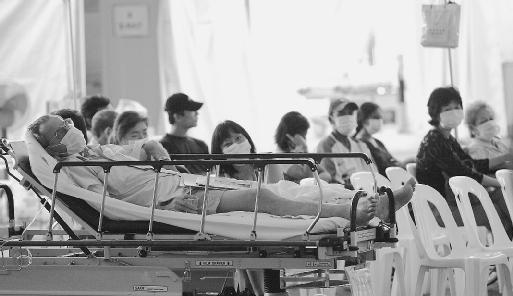Introduction
Swimming in a Sea of Microbes
People do not realize how often they come into contact with bacteria and viruses. These microscopic organisms are in the air, on the surface of this book, and inside people's bodies digesting their last meal. Most people do not fully appreciate that microbes are responsible for the oxygen they breathe, the healthy vegetables on the kitchen table, the pungent cheese in the refrigerator, the clean clothes in the closet, and the clean water coming through the plumbing. Every aspect of people's lives and every part of the natural world is affected, for better or worse, by the actions of bacteria and viruses.
And the worst comes in the form of disease. Even though the overwhelming majority of the encounters with microbes go unnoticed, people are quick to respond when a run-in gives them a runny nose, fever, upset stomach, or more severe symptoms. Some bacteria and viruses cause such pain and devastation that they become headline news. Every year novel microbes are discovered and new infectious diseases emerge. It is not big news when a new bacterium is discovered living harmlessly in the soil, but it is broadcast when a virus mysteriously crops up out of nowhere and kills unsuspecting victims.
The first new disease-causing organism to emerge in the twenty-first century was a virus that appeared in a

remote village in China. Researchers may never know how or why the paths of man and microbe crossed, but that fateful event led to the global outbreak in 2003 of SARS (severe acute respiratory syndrome).
Researchers believe the virus's story started inside a wildcat called a civet. Through the natural process of genetic change, the virus gained the ability to infect humans and may have seized the opportunity to do just that when the civet was captured by a hunter or perhaps bought in a marketplace. Whatever the encounter was, it took only days for the first symptoms to appear. At first just a few people came down with a fever and had difficulty breathing. Soon dozens of others in the village grew ill. A doctor treated the patients as best he could, but the mysterious illness would not respond to typical treatments. He had never seen anything like it. It was similar to the flu or pneumonia, but it hit hard and was deadly. Mysteriously the virus avoided children and attacked otherwise healthy adults.
Health officials do know that the doctor traveled to Hong Kong, infecting many of the guests on the ninth floor of a four-star hotel. One of those guests left the hotel and boarded an overseas flight to Toronto, Canada. Along with her luggage, she carried with her the SARS virus. The microorganism proved to be an eager traveler. It unwittingly hitched rides inside its victims to Taiwan, Singapore, Vietnam, and dozens of other countries.
In reaction to this outbreak, the medical community and organizations such as the Centers for Disease Control and the World Health Organization mounted one of the fastest and largest responses in medical history. Even so, in China alone, SARS infected more than five thousand people. It closed schools and businesses and threatened the lives of thousands of people who languished for weeks in quarantine. Outside of China, the virus weakened thousands of people and killed more than eight hundred people worldwide. Economic experts estimated that SARS cost Asian countries more than $30 billion. Toronto, the largest city in Canada, lost $30 million a day because tourists and business travelers were warned to stay away.
When a microbe kills and causes the global panic that SARS did, it is not difficult to imagine it as a malevolent microorganism out to get us. But disease is just the awful side effect of living in a sea of microbes, which are as vital to the planet's web of life as we are. The emergence of a new disease should remind people how interconnected human society is with these invisible organisms. Most of the time people are not aware that they exist. And unlike the clash with the SARS virus, the overwhelming majority of the encounters with microbes are actually good for us.
Comment about this article, ask questions, or add new information about this topic: